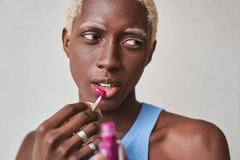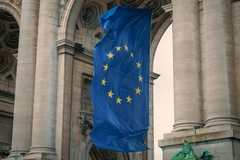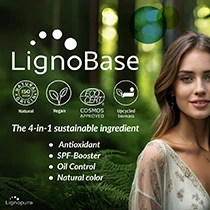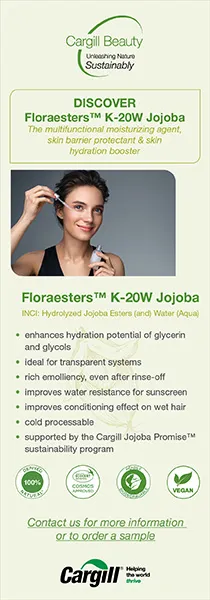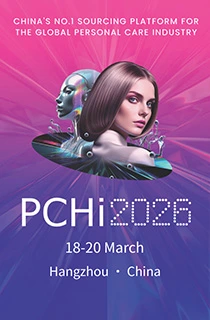Inside Yellow Wood’s Unilever deals: Co-founding partner lifts lid on consumer brand acquisitions
21 Dec 2023 --- Yellow Wood Partners exclusively discusses deals, strategies and upcoming trends with Personal Care Insights. The Boston-based private equity firm recently acquired more Unilever brands, including Q-Tips and Pond’s skin care products, by purchasing Elida Beauty, as the FMCG giant offloads “non-core assets” to streamline its vast stable of consumer goods products.
Earlier this year, Yellow Wood cut its first deal with Unilever, buying the longstanding Suave hair product line, a brand that entered the US market around the time of the Great Depression (1930s) in the US.
The deal could be telling as Yellow Wood sees the “salon-quality” brand regaining popularity, with consumers still wrestling with higher prices due to persistent inflationary pressures.
Dana Schmaltz is a co-founding partner at Yellow Wood Partners and talks to Personal Care Insights about his two transactions with Unilever this year and why 2024 could see the company adding even more consumer brands to its shopping cart.
Let’s begin with the acquisition of Unilever’s Elida Beauty division. The companies started discussing a possible deal involving Elida two years ago. It seems Yellow Wood finally won over the FMCG giant. What changed?
Schmaltz: A new CEO came on board so that may have led to the desire to sell these brands…we know the Unilever team really well. Obviously, from our Suave divestiture, we established a good amount of trust with them not only on the deal front but also on the operational front, where we were able to move Suave out of the Unilever network over a six-month period, which was, I think, the fastest Unilever may have ever experienced…that was with 250 million units being sold a year. Pulling that out of Unilever very quickly and setting up our own distribution network, our own order to cash, our own standalone company — that was no easy task, but we were able to do it faster than they expected. They really appreciated that because anytime you buy a brand, the transition period is a period of uncertainty — for consumers, retailers and the brand owners. So limiting that time benefits the brand, Unilever as a seller and Yellow Wood as a purchaser. Unilever sold Suave to Yellow Wood earlier this year.
Unilever sold Suave to Yellow Wood earlier this year.
Suave was created back in the 1930s. My mom used it — I used it. There’s so much history behind Suave. Take us through that. If you succeeded with a seamless transfer, did you see that helping you acquire more Unilever products or were you just focused on Suave at that time?
Schmaltz: These large consumer product companies have a lot of brands — probably too many so we talked to all of them about trying to maximize the value of some of these smaller brands…Suave was part of a portfolio with Dove and the haircare line Tresemme. In body washing, Unilever also had a bunch of different brands, so when it’s part of a portfolio, it’s hard to give one of those brands attention where their global brand is done right. [Unilever] spent a lot of money on Dove and spent a lot of effort on Tresemme as well. At some point, if you have a hair care team, and they have four brands, it’s hard. We love all of our children equally, but at some point, one kid may not get as much attention….the equity in the [Suave] brand historically is fantastic. As part of the portfolio, it wasn’t getting as much attention as, quite honestly, we believe the brand deserves, so we saw the opportunity to grow the brand.
How have you done that? It’s been about six months now. You said you had a seamless logistics solution with respect to keeping it, from a consumer’s point of view, business as usual. What is your goal with Suave? Elevate it or keep it status quo?
Schmaltz: The consumer work we did on [Suave] showed brand loyalty was very high. Trial-to-repeat purchases were something we looked at. Someone tries the brand. Will they buy it again? What’s the rate of buying it again? Suave had a very high repeat purchase. Unfortunately, as part of Unilever’s portfolio, [not much consumer marketing was done] to bring new consumers into that brand. You said it: your mom used it, and you used it in the past. What we want is for you to use it again. The way to do that is to show the consumer that this product works as well as much more expensive brands. At this time, with the economy where it is…consumers are trading down and quite honestly, we see that happening. We’re getting consumers to trade back into Suave, and once again, once people try it, the repurchase rate is over 70%, so we think increasing that trial will lead to further growth of the brand. On the distribution side, we have a relationship with the Dollar General chain.
The Suave brand fits their consumer extremely well. As soon as we owned the brand…Dollar General said, “Well, great. We want to put the brand on an end cap” at the end of the aisle for all Suave products [including] hair care, body care, deodorant, skin care — all products on an end cap and in all 19,000-plus Dollar General stores. That is an increase of over 750,000 distribution points just from that one. Suave has millions of distribution points because it is so ubiquitous, but adding 750,000 distribution points in the first year of ownership? That’s pretty good, an opportunity we saw for the brands. So we’ll continue to get additional chunks of distribution where, again, those retailers may have been more focused on Dove or Tresemme or pick your brand. Whereas we can go in there and say, “Hey, look, we can do an end cap with all Suave products for an attractive price for your consumer.” So you’re not just showing it in the hair care aisle, it’s an endcap showing…..png) The Elida Beauty purchase includes Pond’s.
The Elida Beauty purchase includes Pond’s.
In these high inflationary times, many wonder when the central bank will cut interest rates, but has this been advantageous for you? As you said, consumers are trading down, and your team has come in at a time when you can take advantage of the shifting landscape.
Schmaltz: Absolutely — we, in the financial press or the financial sector, see the overall inflation [but] the consumer sees it broken down by what they’re actually purchasing. So yes, inflation has gone down from 9% to just under 4%, but if you compare it to 2019, consumers are paying, in some categories, 30% more than what they paid four years ago — and compensation hasn’t gone up. Wages are going up, but it hasn’t quite matched that. The overall inflation rate is heavily weighted by cars and durable goods purchases, but if you look at food, grocery and personal care, that inflation is still pretty high. So yes, consumers with tighter spending are going to look to alternatives…people like to buy brands that have quality, that have heritage, and quite honestly, if we could have done [the Suave deal] a year earlier, it would have been even better…Next year is the real first year that we can try to impact consumption with additional standalone Suave brand company marketing and consumer marketing.
It was a successful transaction for Suave in the middle of the year — then [Unilever CEO] Hein Schumacher came in. Did you think, “Let’s try again to see if we can grab more brands from Unilever?”
Schmaltz: We talked to Unilever a lot. We found out they were interested and they talked to a number of people. We try to partner with these large companies to get them the most value for their brands. They believe they’re not able to maximize these brands. They think they’ve seen us do it in the past, so they’re looking for someone they can trust to get a complex transaction done and get the most value for their brands. So, the market will speak on the valuation. And then there’s the ability to actually achieve the carve-out to make the seller — Unilever, in this case, look good, that they sold the brands, that the consumers weren’t hurt by the transaction, and for Yellow Wood to go and step in and hopefully drive further growth for the brands.
I can see why, for [Unilever], it’s not just about selling the brand to anyone — these brands have been with the company for a long time. From their end, it was advantageous for Unilever to see how you were able to execute the Suave transaction.
Schmaltz: I hope they do and believe they do because, again, when you have a transaction, you have inventory, which still has the Unilever name on it [until] we can change the packaging. So, to your point, there is a period where the consumer may not even know the ownership has changed. Our goal is to change that packaging out to our own company packaging as soon as possible. But you know, there’ll be a little bit in the back which may still say Unilever for a period of time because we have to run out that inventory..png) Yellow Wood targets popular consumer brands.
Yellow Wood targets popular consumer brands.
Let’s talk about your latest transaction. You mentioned valuations. I believe Unilever was trying to get over a billion dollars a couple of years ago. Where did you settle on that?
Schmaltz: We’re not going to disclose the purchase price. I believe the market speaks for where these brands are sold. Unilever is getting a very fair value — we weren’t the only ones they talked to. They were talking to other people as well.
What does the future hold for Q-Tips and Pond’s? Why did you see that as a beneficial acquisition? Is the goal to turn Yellow Woods into an FMCG giant as well?
Schmaltz: That’s our goal. At Yellow Wood, we focus on what we call “affordable luxuries,” which are products that the everyday consumer [can afford] whether they are in North America or Europe…and they appreciate the value. Efficacy is so important for that repeat purchase as I talked about before…so we look for brands that outperform private labels, outperform competitive products, and that consumers love and that can take the form of some of these large brands, like Q-Tips or Suave or Dr. Scholl’s where they’ve been part of a big company [and] maybe didn’t get as much attention [so] we can pull them out and give them that attention and drive the sales velocity up and hopefully improve the efficiency of the brand as well to operation. We also look for brands that have great consumer weekly purchases but, quite honestly, aren’t distributed that widely. So we’re a little smaller…we can increase the distribution like on the Dollar General swap.
We owned a great brand called Dr. Teal’s for a long time. When we bought that brand, it was maybe US$30 million in sales, and I think when we sold it, it was probably doing $150 million in sales. We created new products, and increased the distribution dramatically. So those are the kind of playbooks in a very macro sense that we at Yellow Wood look for and try to execute.
By Anita Sharma

